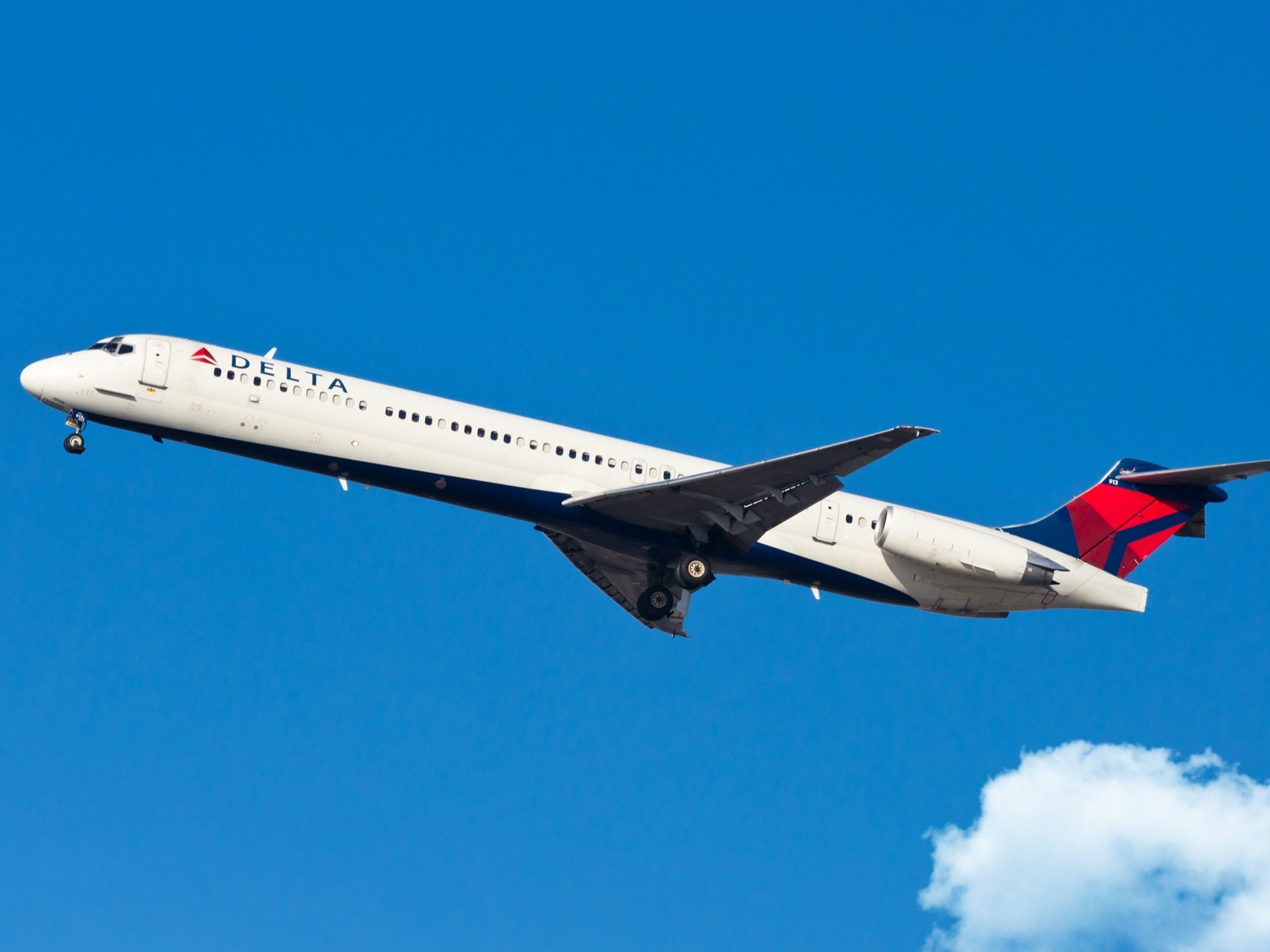- Delta Air Lines is advancing the retirement date of its McDonnell Douglas MD-80 series aircraft to June 2.
- The Long Beach, California-built jets joined the Delta fleet in 1987 and also flew for Trans World Airlines, American Airlines, and Alaska Airlines.
- Delta is the last US passenger airline to operate the aircraft with American and Allegiant having retired theirs over the past two years.
- Visit Business Insider’s homepage for more stories.
Delta Air Lines has given an early retirement date to its McDonnell Douglas MD-80 series aircraft as the carrier seeks to swiftly move forward with a fleet renewal plan amid the coronavirus pandemic.
June 2 will be the last day that the iconic T-tailed aircraft produced in Long Beach, California will fly for a US passenger airline with the final MD-88 and MD-90 aircraft descending upon Delta’s Atlanta hub for the last time. For the MD-90, the final flight will arrive from Houston at 8:58 a.m. while the final MD-88 will arrive from Washington, DC at 10 a.m.
After flying Delta passengers one last time, the jets will head to Blytheville, Arkansas for retirement, 350 miles away from Delta’s headquarters in Atlanta. Replacing the aircraft will largely be Delta’s newest arrival, the Airbus A220.
The retirement plans put an end to a 33-year era of the iconic aircraft flying for Delta. Dating back to the 1980s, Delta’s aging McDonnell Douglas fleet features some of the oldest aircraft still flying for the airline, made by a manufacturer that no longer exists.
Take a look back at the McDonnell Douglas MD-80 series.
The McDonnell Douglas MD-80 series was the successor to the smaller Douglas DC-9, with McDonnell Aircraft and Douglas Aircraft Company merging in 1967.

Source: New York Times
Its predecessor, the DC-9, was a tried and true short-haul aircraft with typical seating of fewer than 140 passengers.

Source: Delta Museum
The MD-80 expanded on the design and offered better range and a longer fuselage to seat more passengers, as well as improvements in the cockpit, avionics, and engines.

Source: Delta Museum
Powering the aircraft would be two rear-mounted Pratt & Whitney JT8D engines.

Source: Pratt & Whitney
Mounting the engines at the rear of the aircraft instead of under the wings offered a quiet cabin for those seated towards the front but a noisy ride for those in the last few rows.

The same engines were used on the Boeing 727, a tri-engine jet with a similar T-tail design.

Airlines like Delta had opted for the MD-80 as a replacement to the 727 since the former was able to offer better economics with only two engines.

Source: Delta Museum
The MD-80 series was built at McDonnell Douglas' Long Beach, California facility on the grounds of Long Beach Airport.

Source: Boeing
It was the main production plant for the newly-combined company and produced the likes of the Douglas DC-10,

McDonnell Douglas MD-11,

And C-17 Globemaster III, the last plane to be built in Long Beach.

Production began in the late 1970s with the jet taking its first flight in October 1979.

Source: Boeing
Swissair took delivery of the first model one year later in 1980.

Source: Boeing
The all-American jet became popular with airlines around the world including Trans World Airlines...

American Airlines...

Alitalia...

Volotea...

Alaska Airlines...

Allegiant Air...

Avianca...

And Spirit Airlines.

Following the original MD-80, McDonnell Douglas kept the series going by introducing incremental variants, each with their own improvements but with the same overall design.

The MD-82, for example, featured higher performance engines to utilize airports at high altitudes in hot conditions.

Source: Delta Museum
The MD-83 was a long-range variant with additional fuel capacity for longer flights.

Source: Airliners.net
The MD-87 had a shorter fuselage and offered greater range.

Source: Airliners.net
The MD-88, one of the two types being retired by Delta, had a more advanced cockpit.

Source: Delta Museum
The MD-90 series then came in the 1990s offering greater fuel efficiency, new engines, and cockpit improvements.

Source: Delta Museum
Powering the MD-90 were two International Aero Engines V2500 engines, similarly rear-mounted as part of a T-tail configuration.

Source: Delta Museum
Delta Air Lines took the first delivery of the aircraft in 1995.

Source: Delta Museum
The MD-80 series also included rear air-stairs, a typical feature on larger T-tails like the DC-9 and 727.

And they could seat around 150 passengers in a 2-3 configuration typically split between first/business class and economy.

The cockpit was also a favorite among pilots due to its quirks. For example, pilots would have to look through a mirror on the dashboard to check the compass which was located behind the co-pilot's head.

Source: YouTube - Kent Wien
The jet also earned the nickname "Mad Dog."

American Airlines was one of the MD-80s largest operators, having nearly 400 at its high point. The airline received an influx of MD-80s, known as Super 80s at American, following a merger with TWA.

Source: Planespotters.net
Once a staple of American's short-to-medium haul fleet, the MD-80 could be seeing flying regularly from its bases in Chicago and Dallas. Key routes included New York-Chicago and Chicago-Dallas.

American Airlines retired its MD-80 fleet in September 2019, replacing it with the Boeing 737 and Boeing 737 Max.

A year earlier, ultra-low-cost carrier Allegiant Air retired its MD-80s.

Delta Air Lines then remained as the final MD-80 series operator with the MD-88 and MD-90.

The two are set to be retired from Delta's fleet on June 2, flying their final flights to Atlanta, Georgia, and all arriving before midday.

Source: Delta Air Lines
The aircraft will then be sent to Blytheville, Arkansas for retirement, ending Delta's 33-year history with the aircraft and leaving no scheduled US passenger airline to operate the jet.

Source: Delta Air Lines
The aircraft's legacy lives on with the Boeing 717, which carried on the T-tail's legacy after a merger between McDonnell Douglas and Boeing with a near-identical overall design.

Delta similarly operates the 717, having acquired the fleet from AirTran, but is likely retiring that fleet soon as well.

With most US and European airlines retiring the aircraft, the largest concentration remains in Asia and particularly, Iran.

World Atlantic Airways, a US charter airline that also operates removal flights for the US Department of Homeland Security, will become the largest American operator of the series.

Source: The Aviation Herald and Planespotters.net
Though it outlasted its manufacturer, the MD-80 couldn't last forever. Another iconic American airliner is retiring from American skies.


